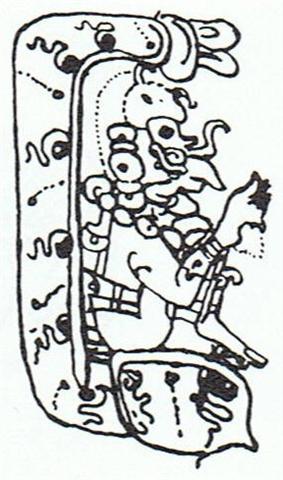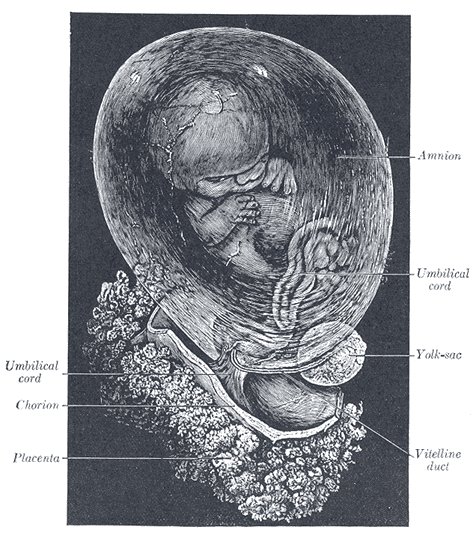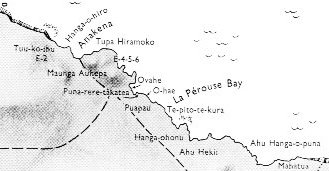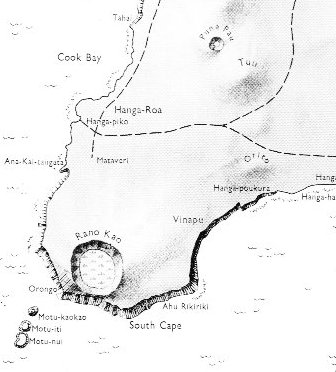The Sun followed a path down towards the
equator in the sky, where Orion was. Precession had
moved this path earlier and earlier among the stars
since the very ancient past when the northern spring equinox
had been in Orion:
At the time of Bharani the Sun would have
reached the first star in the Belt of Orion (Mintaka,
the Belt) 41 days after 0h (viz. in "May 21), and this
had been around 41 * 71 = 2911 years later than at the time
when Orion was at 0h.
|
APRIL 8 |
9
(99) |
10
(*20) |
 |
 |
 |
|
Ga1-18 (261 = 242 +
1 + 18) |
Ga1-19 (11 * 9 = 99) |
Ga1-20 |
|
KHUFU |
KHAFRE |
MENKAURE |
|
MINTAKA (Belt) = δ
Orionis,
υ Orionis (82.4), χ Aurigae (82.5), ε Columbae
(82.6) |
Al
Hak'ah-3 /
Mrigashīrsha-5 /
Turtle-20 /
Mas-tab-ba-tur-tur (Little Twins)
ARNEB = α Leporis,
Crab Nebula = M1 Tauri
(83.0,
φ¹ Orionis
(83.1),
HEKA
= λ Orionis,
Orion Nebula = M42
(83.2),
φ²
Orionis
(83.6),
ALNILAM (String of Pearls) = ε Orionis
(83.7) |
Three Stars-21
/
Shur-narkabti-sha-shūtū-6 (Star in the
Bull towards the south) /
ANA-IVA-9 (Pillar of Exit)
HEAVENLY GATE = ζ Tauri,
ν Columbae (84.0), ω Orionis
(84.2),
ALNITAK (Girdle) = ζ Orionis,
PHAKT (Phaet) = α Columbae
(84.7) |
|
June 11 |
12 |
13
(*84) |
|
°June 7 |
8 |
9
(170) |
|
'May
15 (500) |
16
(136) |
17 |
|
"May
1 (121) |
2 |
3
(133) |
|
NAKSHATRA DATES: |
|
OCTOBER 8 |
9
(*202) |
10 |
|
December 11 (345) |
12 |
13 |
|
°December 7 (341) |
8 |
9 |
|
'November 14 (318) |
15 |
16
(*240) |
|
"October 31 (304) |
"November 1 |
2
(306) |
At the time of rongorongo it had been Bharani
which was 41 days after 0h, i.e. the Sun reached Mintaka
41 + 41 = 82 days after 0h.
|
Sirrah (α Andromedae) |
40 |
Bharani (41 Arietis) |
40 |
Mintaka (δ Orionis) |
|
March 21 (80) |
May
1 (121) |
June 11 (162) |
Ga1-19 could have been designed to look like a
fish-hook in order to visualize the position where the
southern hemisphere in the sky was due to be 'drawn up'.
Ga1-18 (where 118 = 472 / 4) clearly
demonstrates the loss of an eye, which odd event was
reflected not only in the ceremonies on Hawaii (half a
year away) but also at the beginning of Raven time (when
he was paddled out to mid-heaven):
... in the ceremonial course of the coming year, the
king is symbolically transposed toward the Lono
pole of Hawaiian divinity ... It need only be noticed
that the renewal of kingship at the climax of the
Makahiki coincides with the rebirth of nature. For
in the ideal ritual calendar, the kali'i battle
follows the autumnal appearance of the Pleiades, by
thirty-three days - thus precisely, in the late
eighteenth century, 21 December, the winter solstice.
The king returns to power with the sun. Whereas, over
the next two days, Lono plays the part of the
sacrifice. The Makahiki effigy is dismantled and
hidden away in a rite watched over by the king's 'living
god', Kahoali'i or 'The-Companion-of-the-King',
the one who is also known as 'Death-is-Near' (Koke-na-make).
Close kinsman of the king as his ceremonial double,
Kahoali'i swallows the eye of the victim in
ceremonies of human sacrifice ...
... The Raven
stole the skin and form of the newborn child. Then he
began to cry for solid food, but he was offered only
mother's milk. That night, he passed through the town
stealing an eye from each inhabitant. Back in his foster
parents' house, he roasted the eyes in the coals and ate
them, laughing. Then he returned to his cradle, full and
warm. He had not seen the old woman watching him from
the corner - the one who never slept and who never moved
because she was stone from the waist down. Next morning,
amid the wailing that engulfed the town, she told what
she had seen. The one-eyed people of the sky dressed in
their dancing clothes, paddled the child out to
mid-heaven in their canoe and pitched him over the side
...
| Hoe
Hoe 1. Paddle. Mgv.:
hoe, ohe, id. Mq., Ta.: hoe,
id. 2. To wheeze with fatigue (oeoe 2).
Arero oeoe, to stammer, to stutter; Mgv.
oe, to make a whistling sound in
breathing; ohe, a cry from a person out
of breath. Mq.: oe, to wheeze with
fatigue. 3. Blade, knife; hoe hakaiu,
clasp-knife, jack-knife; hoe hakanemu,
clasp-knife; hoe pikopiko, pruning knife.
4. Ta.: oheohe, a plant. Ma.: kohekohe,
id. Churchill.
T. Paddle. E hoe te heiva
= 'and to paddle (was their) pleasure'. Henry.
Hoea, instrument for
tattooing. Barthel. |
The moe (sleep) type of glyph, for
instance at Menkaure, bothered me for a long time
because I had perceived it tended to be at the
beginning of a time cycle - but why should there be
sleep at dawn when instead the Cock (Cook) should be
wide awake and calling out?
 |
 |
|
moe |
moa |


...
Cook's
first visit, to Kaua'i Island in January 1778, fell
within the traditional months of the New Year rite (Makahiki).
He returned to the Islands late in the same year, very
near the recommencement of the Makahiki ceremonies.
Arriving now off northern Maui, Cook proceeded to make a
grand circumnavigation of Hawai'i Island in the
prescribed clockwise direction of Lono's yearly
procession, to land at the temple in Kealakekua Bay
where Lono begins and ends his own circuit. The British
captain took his leave in early February 1779, almost
precisely on the day the Makahiki ceremonies closed. But
on his way out to Kahiki, the Resolution sprung a mast,
and Cook committed the ritual fault of returning
unexpectedly and unintelligibly. The Great Navigator was
now hors catégorie, a dangerous condition as
Leach and Douglas have taught us, and within a few days
he was really dead - though certain priests of Lono did
afterward ask when he would come back ...
The explanation of moe seems to be that the
beginning was not at birth but 9 months earlier, viz. at conception. The new child would not be out in the open
until 9 * 36 = 324 nights had passed - because "May 1 (11 * 11) + 325
(as in the Julian equinox date 3-25)
= 446 = 365 + 81 ("March 22).
|
APRIL 9
(464) |
10
(100) |
323 |
 |
 |
|
Ga1-19 (11 * 9 = 99) |
Ga1-20 |
|
KHAFRE |
MENKAURE |
|
Turtle-20 /
Mas-tab-ba-tur-tur (Little Twins)
ARNEB = α Leporis,
Crab Nebula = M1 Tauri
(83.0,
φ¹ Orionis
(83.1),
HEKA
= λ Orionis,
Orion Nebula = M42
(83.2),
φ²
Orionis
(83.6),
ALNILAM (String of Pearls) = ε Orionis
(83.7) |
Three Stars-21
/
Shur-narkabti-sha-shūtū-6 (Star in the
Bull towards the south) /
ANA-IVA-9 (Pillar of Exit)
HEAVENLY GATE = ζ Tauri,
ν Columbae (84.0), ω Orionis
(84.2),
ALNITAK (Girdle) = ζ Orionis,
PHAKT (Phaet) = α Columbae
(84.7) |
|
"May
2 (*407) |
3
(123) |
|
2-27
(π) |
FEBRUARY 28 |
MARCH 1 |
2
(61) |
3 (427) |
4 (*348) |
 |
 |
 |
 |
 |
 |
|
Gb4-23 |
Gb4-24 |
Gb4-25 |
Gb4-26 |
Gb4-27 (118) |
Gb4-28 (348) |
|
"March 22 (*366) |
23 |
24 (448) |
25 (84) |
26 |
2-27
(π) |
 |
 |
|
vai |
2-27
(π) |
|
sweet
spring water of life |
"March 22 (*366) |
|
Pito
1. Umbilical cord; navel; centre
of something: te pito o te henua, centre
of the world. Ana poreko te poki, ina ekó
rivariva mo uru ki roto ki te hare o here'u i te
poki; e-nanagi te pito o te poki, ai ka-rivariva
mo uru ki roto ki te hare, when a child is
born one must not enter the house immediately,
for fear of injuring the child (that is, by
breaking the taboo on a house where birth takes
place); only after the umbilical cord has been
severed can one enter the house. 2. Also
something used for doing one's buttons up
(buttonhole?). Vanaga. Navel. Churchill.
H Piko 1. Navel, navel
string, umbilical cord. Fig. blood relative,
genitals. Cfr piko pau 'iole, wai'olu.
Mō ka piko, moku ka piko, wehe i ka piko,
the navel cord is cut [friendship between
related persons is broken; a relative is cast
out of a family]. Pehea kō piko? How is
your navel [a facetious greeting avoided by some
because of the double meaning]? 2. Summit or top
of a hill or mountain; crest; crown of the head;
crown of the hat made on a frame (pāpale pahu);
tip of the ear; end of a rope; border of a land;
center, as of a fishpond wall or kōnane
board; place where a stem is attached to the
leaf, as of taro. 3. Short for alopiko.
I ka piko nō 'oe, lihaliha (song), at the
belly portion itself, so very choice and fat. 4.
A common taro with many varieties, all with the
leaf blade indented at the base up to the
piko, junction of blade and stem. 5. Design
in plaiting the hat called pāpale 'ie. 6.
Bottom round of a carrying net, kōkō. 7.
Small wauke rootlets from an old plant.
8. Thatch above a door. 'Oki i ka piko,
to cut this thatch; fig. to dedicate a house.
Wehewehe. |
|
...
Then three lines are drawn east and west, one
across the northern section indicates the
northern limit of the Sun (corresponding with
the Tropic of Cancer) about the 15th and 16th
days of the month Kaulua (i.e., the 21st
or 22nd of June) and is called ke alanui
polohiwa a Kane, the black-shining road of
Kane. The line across the southern
section indicates the southern limit of the Sun
about the 15th or 16th days of the month
Hilinama (December 22) and is called ke
alanui polohiwa a Kanaloa, the black-shining
road of Kanaloa. The line exactly around
the middle of the sphere is called ke alanui
a ke ku'uku'u, the road of the spider, and
also ke alanui i ka Piko a Wakea, the way
to the navel of Wakea (the Sky-father)
... |
|
...
A man had a daughter who possessed a wonderful
bow and arrow, with which she was able to bring
down everything she wanted. But she was lazy and
was constantly sleeping. At this her father was
angry and said: 'Do not be always sleeping, but
take thy bow and shoot at the navel of the
ocean, so that we may get fire.' The navel of
the ocean was a vast whirlpool in which sticks
for making fire by friction were drifting about.
At that time men were still without fire. Now
the maiden seized her bow, shot into the navel
of the ocean, and the material for fire-rubbing
sprang ashore
... |
|
... At the moment of delivery the man who ties
the navel cord (tangata hahau pito) is
called in. The tying of the navel cord is sacred
and must be performed according to ritual ...
The first knot (hahau a te matau, string
of the right) is tied after the string has made
transverse turns around the navel cord passing
from left to right. After three more transverse
turns around the navel cord right to left, the
second knot (hahau patu maui, string to
the left) is tied. These knots keep the child's
strength in his body. The navel cord is cut by a
boy or girl (kope or vie nagi pito,
young man or woman who bites the navel) ... |
|
...
One of the parallels suggested by Heyerdahl is
that between Polynesian pito 'navel'…and
Quito, the very ancient Ecuadorian
capital. In Hawaiian, the equator is defined as
ke ala i ka piko a wakea 'the road to the
navel (or birth-place) of Wakea (=
Light)', where piko is the regular reflex
of PPN *pito.
Thus the possibility should exist to postulate
kito, meaning 'navel', as a word of the
pre-Incaic Andean language(s), to be used as a
place-name later and therefore preserved
today. The question remains open whether there
could be - as in the Hawaiian example - any
connection with the equator crossing the
area. (The Incas' ancient capital, Kosco
or Cuzco, meant 'navel' too.) ... |
|
...
Thus a group of islands which considered itself
te pito, the navel of the universe, was
conceived of as situated at the center of a
series of concentric spaces of great but
indefinite extent, separated from one another by
the walls of the various sky domes which rested
on the earth ... |
|
...
The Gilbert Islanders are Polynesians, having
emigrated, according to their traditions, from
Upolu, Samoa, which they look upon as
te buto (Maori pito), the Navel of
the World ...
... An oracle
reached him from the town of Buto, which said
'six years only shalt thou live upon this earth, and
in the seventh thou shalt end thy days' ... |
|
...
How serious that worship [tree worship] was in
former times may be gathered from the ferocious
penalty appointed by the old German laws for
such as dared to peel the bark of a standing
tree. The culprit's navel was to be cut out and
nailed to the part of the tree which he had
peeled, and he was to be driven round and round
the tree till all his guts were wound about its
trunk ... |
|
...
4
March 1779. The British ships are again at
Kaua'i, their last days in the islands, some
thirteen months since their initial visit. A
number of Hawaiian men come on board and under
the direction of their women, who remain
alongside in the canoes, the men deposit navel
cords of newborn children in cracks of the
ships' decks (Beaglehole 1967:1225).
For
an analogous behavior observed by the missionary
Fison on the Polynesian island of Rotuma,
see Frazer (1911, 1:184). Hawaiians are
connected to ancestors (auumakua), as
well as to living kinsmen and descendants, by
several cords emanating from various parts of
the body but alike called piko,
'umbilical cord'. In this connection, Mrs.
Pukui discusses the incident at Kaua'i:
I
have seen many old people with small containers
for the umbilical cords... One grandmother took
the cords of her four grandchildren and dropped
them into Alenuihaha channel. 'I want my
granddaughters to travel across the sea!' she
told me.
Mrs. Pukui believes that the story of
women hiding their babies' pikos in
Captain Cook's ship is probably true.
Cook was first thought to be the god Lono,
and his ship his 'floating island'. What woman
wouldn't want her baby's piko there? |
Until then and during 18 * 18 = 12 * 27 nights
the new Sun (son) would be inside Mother Earth:

365 - 324 = 41. And 324 + 260 = 584
(cycle of Venus). However, the G tablet did not allow
for so
many glyphs. On side b there are 242 and to reach 260 it
was necessary to add 1 + 17.

|
Pu
1. To come forward to greet
someone met on the road; to walk in front, to go
in front: ka-pú a mu'a, let them go
first. 2. Pú a mu'a, to intervene, to
come to someone's rescue; he-pú-mai a mu'a,
he-moaha, he came to my rescue and saved my
life. 3. Ancient expression: ai ka-pú, ai
ka-pú, tell us frankly what you think. 4.
Hole, opening, orifice; well; circumference,
rotundity; swirling water; pú-haga,
vaginal orifice; pú-henua (also just
henua), placenta. He pú henua nó te me'e
aau, he-oti-á; ina-á me'e ma'u o te rima
i-topa-ai koe, a placenta was all you had,
it is a past thing now; you held nothing in your
hands when you were born (stern words said to
children to make them realize that they must not
be demanding, since they were born naked and
without possessions). 5. To dig out (tubers):
he-pú i te uhi, to dig out yams. Vanaga.
1. A trumpet. P Mgv.: pu,
a marine shell. Mq.: pu, conch shell.
Ta.: pu, shell, trumpet. 2. A small
opening, hole, mortise, stirrup, to pierce, to
perforate, to prick; pu moo naa, hiding
place; taheta pu, fountain, spring;
hakapu, to dowel, to pierce, to perforate.
PS Sa., Fu., Niuē:
pu, a
hole. Churchill. Mq.: Pu, source,
origin. Ma.: pu, root, origin,
foundation. Churchill. |
| Eve
1. Placenta, afterbirth (eeve).
T Pau.: eve, womb. Ta.: eve,
placenta. Ma.: ewe, id. Haw.: ewe,
navel string. 2. The rear; taki eeve, the
buttocks; hakahiti ki te eeve, to show
the buttocks; pupuhi eve, syringe. 3. The
bottom of the sea. Churchill. |
| Henua
Land, ground, country; te
tagata noho i ruga i te henua the people
living on the earth. Placenta: henua o te
poki. Vanaga. 1. Land, country, region (heenua);
henua tumu, native land. P Pau.: henua,
country. Mgv.: enua, land, said of
shallow places in the sea; mamuenua, the
earth. Mq.: fenua, henua, land,
country, place, property. Ta.: fenua,
land, country place. There is apparently nothing
critical in the first vowel; e is the
most widely extended; a is found only in
Samoa, Viti, and Rotumā
in Nuclear Polynesia, but is the dominant vowel
in Melanesian survivals. 2. Uterus. T (cf
eve). T Pau.: pufenua, placenta.
Mgv.: enua, id. Mq.: fenua,
henua, id. 3. Pupuhi henua, volley.
PS Sa.: fana-fanua, cannon. To.: mea
fana fonua, id. Fu.: fanafenua, id.
Niuē:
fanafonua, id.
Viti: a dakal ni vanua,
id. Churchill.
M.: Whenua, the Earth;
the whole earth: I pouri tonu te rangi me te
whenua i mua. 2. A country or district: A
e tupu tonu mai nei ano i te pari o taua whenua.
Tangata-whenua, natives of a particular
locality: Ko nga tangata-whenua ake ano o
tenei motu. Cf. ewe, the land of
one's birth. 3. The afterbirth, or placenta:
Ka taka te whenua o te tamaiti ki te moana.
Cf. ewe, the placenta. 4. The
ground, the soil: Na takoto ana i raro i te
whenua, kua mate. 5. The land, as opposed to
the water: Kia ngaro te tuapae whenua; a,
ngaro rawa, ka tahi ka tukua te punga. Text
Centre.
Ha.: Honua. 1. nvs.
Land, earth, world; background, as of quilt
designs; basic, at the foundation, fundamental.
See lani. Kaua honua, world war.
Ka wahine 'ai honua, the earth-eating
woman [Pele]. ho'o honua To
establish land, act as land; to scoop out earth,
as for a fireplace; firmly established. Fig.,
rich (rare). (PPN fanua.). 2. part.
Suddenly, abruptly and without reason. Cf.
kūhonua. Huha honua ihola nō,
suddenly angry and for no reason. Maka'u
honua ihola nō ia, sudden fear. 3. n. Middle
section of a canoe; central section of a canoe
fleet, as fishing iheihe fish; main
section, as of an army. Wehewehe. |
... The two
hulls were no longer kept lashed together (i.e., they
were separated for the rest of the journey). Hotu
called out to the canoe of the queen: 'Steer the canoe
to the left side when you sail in. Teke will jump
over on board (your) canoe to work his mana when
you sail through the fishing grounds!' Teke
jumped on board the second canoe, (that) of the queen.
The king's canoe sailed to the right, the queen's to the
left. Honga worked his mana in the fishing
grounds. (List of five fishing grounds that belong to
Hotu and Honga.) Teke worked his
mana in the fishing grounds to the left side. (List
of nine fishing grounds that belong to Hotu and
Teke.)
The men on
board the royal canoe looked out from Varinga Te
Toremo (the northeastern cape of the Poike
peninsula). Then they saw the canoe of the queen, the
canoe of Ava Rei Pua, as it reached Papa Te
Kena (on the northern shore, east of Hanga Oteo).
Honga came and gazed in the direction below
(i.e., toward the west). He called out to the noteworthy
ruler (? ariki motongi) Hotu: 'There is
the canoe of the queen! It will be the first one to
land!' At this news King Hotu replied to Honga,
'Recite (rutu) ('powerful incantations') as
though the ten brothers of the chief (ariki
maahu) were one whole (?).' The ten recited with all
their might. This is what they recited: 'Let all
movement (? konekone) cease!' They recited and
sailed on swiftly: Honga, Te Kena, Nuku
Kehu, Nga Vavai, Oti, Tive
(corrected for 'Sive'), Ngehu, Hatu,
Tuki, and Pu (corrected for 'Bu').
He worked mana in the fishing grounds. (Naming of
two fishing grounds.)
When
Hotu's canoe had reached Taharoa, the vaginal
fluid (of Hotu's pregnant wife) appeared. They
sailed towards Hanga Hoonu, where the
mucus (kovare seems to refer to the amniotic sac
in this case) appeared. They sailed on and came to
Rangi Meamea, where the amniotic fluid ran
out and the contractions began. They anchored the canoe
in the front part of the bay, in Hanga Rau.
The canoe of Ava Rei Pua also arrived and
anchoraged. After Hotu's canoe had anchoraged,
the child of Vakai and Hotu appeared. It
was Tuu Maheke, son of Hotu, a boy. After
the canoe of Ava Rei Pua had also arrived and
anchoraged, the child of Ava Rei Pua was born.
It was a girl
named Ava Rei Pua Poki ...

| Ana
1. Cave. 2. If. 3. Verbal prefix:
he-ra'e ana-unu au i te raau,
first I drank the medicine. Vanaga.
1. Cave, grotto, hole in the
rock. 2. In order that, if. 3. Particle (na
5); garo atu ana, formerly; mee koe
ana te ariki, the Lord be with thee. PS Sa.:
na, an intensive postpositive particle.
Anake, unique. T Pau.: anake,
unique, to be alone. Mgv.: anake, alone,
single, only, solely. Mq.: anake, anaé,
id. Ta.: anae, all, each, alone, unique.
Anakena, July. Ananake, common,
together, entire, entirely, at once, all,
general, unanimous, universal, without
distinction, whole, a company; piri mai te
tagata ananake, public; kite aro o te
mautagata ananake, public; mea ananake,
impartial; koona ananake, everywhere.
Churchill.
Splendor; a name applied in
the Society Islands to ten conspicious stars
which served as pillars of the sky. Ana
appears to be related to the Tuamotuan
ngana-ia, 'the heavens'. Henry translates
ana as aster, star. The Tahitian
conception of the sky as resting on ten star
pillars is unique and is doubtless connected
with their cosmos of ten heavens. The Hawaiians
placed a pillar (kukulu) at the four
corners of the earth after Egyptian fashion;
while the Maori and Moriori considered a single
great central pillar as sufficient to hold up
the heavens. It may be recalled that the Moriori
Sky-propper built up a single pillar by placing
ten posts one on top of the other. Makemson. |

|














